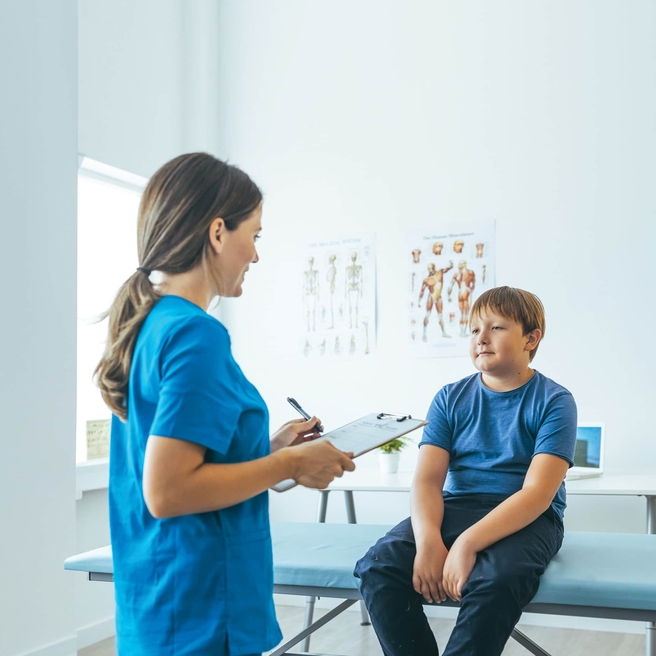What is hypogonadism?
Hypogonadism is a condition in which the body’s sex glands make little or no sex hormone. The sex glands are the testes in males and the ovaries in females. During puberty, sex hormones help control the development of breasts, testicles and pubic hair. They are also key for menstruation and sperm production.
Depending on when it begins, hypogonadism may affect the development of sex organs, interfere with puberty or cause infertility and sexual dysfunction.
Signs and symptoms
Children with hypogonadism do not progress through puberty. Girls don’t menstruate or develop breasts. Their overall growth is slowed.
Boys with hypogonadism have slowed muscle and genital development. Their arms and legs are long in relation to their torso. Body hair is sparse and their voice does not deepen.
Hypogonadism that appears after puberty will stop a woman’s menstrual cycle and may cause hot flashes. Men with hypogonadism have a decreased sex drive, muscle loss and breast development.
If the cause is a brain tumor, symptoms may include headaches or vision loss and a milky discharge from the breasts.
Cause
The two types of hypogonadism are called primary and central. In primary hypogonadism, the testes or ovaries don’t function properly. In central hypogonadism, the hypothalamus and pituitary gland don’t function properly. These areas of the brain signal the testes or ovaries to produce sex hormones. This form of hypogonadism can cause infertility.
The most common cause of primary hypogonadism is Klinefelter syndrome in boys and Turner syndrome in girls. One in 2,500 to 10,000 babies are born with Turner syndrome and 1 in 500 to 1,000 are born with Klinefelter syndrome.
Other causes of primary hypogonadism are:
- Certain autoimmune disorders such as Addison’s disease and hypoparathyroidism
- Infection
- Liver and kidney disease
- Radiation
- Surgery
Causes of central hypogonadism include:
- Genetic disorders such as Kallmann syndrome
- Anorexia nervosa
- Infections
- Nutritional deficiencies
- Pituitary disorders
- Radiation
- Surgery
- Trauma
- Tumors
- Rapid weight loss
- Steroid or opiate use
Central hypogonadism affects boys and girls equally.
Testing and diagnosis
Diagnosis begins with a physical examination to check your child’s progress through puberty. Your child’s doctor will order blood tests to check the levels of testosterone or estrogen and the puberty hormones, such as LH (lutenizing hormone) and FSH (follicle-stimulating hormone).
Your child’s doctor may also order imaging tests, such as an MRI or CT scan to check for tumors in the pituitary gland, and an ultrasound to look for ovarian cysts or other disorders of the ovaries.
Treatment
Many forms of hypogonadism are treatable with hormone replacement therapy. Girls and women will take estrogen and progesterone are used for girls and women. Boys and men will take testosterone.
If hypogonadism is caused by a tumor on the pituitary gland, treatment may include radiation, medication or surgery to shrink or remove the tumor.
Outlook
With ongoing hormone replacement therapy, men and women with hypogonadism are able to live a normal life.
Resources to help
Adrenal and Puberty Center Resources
We have collected resources to help you understand your child's adrenal disorders and feel confident with the care you are providing your child at home.
Reviewed by Maria G. Vogiatzi, MD
